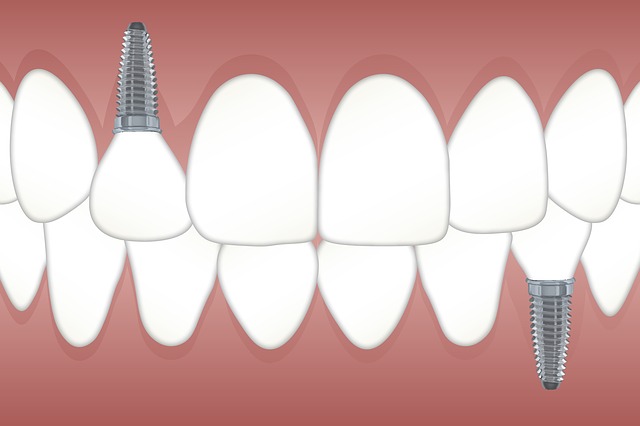Dental implants are a perfect solution for missing or broken teeth.
In this quick article, we cover everything you need to know.
Let’s get to it!
In both cosmetic and restorative dentistry, dental implants have become an established way to replace severely damaged and missing teeth. The implants are designed to look and function just as natural teeth do, and with proper care and maintenance, they can serve as a long-term restoration without the need for further treatment.
As professional dental implant dentists, we’ve undertaken countless procedures over the years (see some of our examples here). We have the knowledge, specialist skills, and experience to give you back your great smile. If you’ve lost a tooth or severely broken one or more, our dental implant treatment could be the perfect solution for you to restore both the aesthetics and biting function of your teeth without the need for bridges and dentures.
Dental implants can dramatically improve the quality of your life and restore your confidence. You’ll no longer have to worry about others noticing your missing teeth, and you can eat what you like at parties, restaurants, and at home, of course.
Aside from causing crippling self-consciousness, gaps from missing or broken teeth can lead to a number of health concerns. Chewing and speaking becomes more difficult, and there’s a higher risk of developing oral conditions, shifting of the remaining teeth, and poor nutrition from the inability to eat certain foods. Moreover, the longer the gap remains unfilled, the more bone deterioration can occur on the part where the tooth was supported.
Dental implants can be an effective solution to these risks and problems, providing the following benefits:
The right candidate for dental implants ideally has an ample amount of jawbone density to support the implant. In case you don’t have the right amount of bone density to support an implant, you might have to undergo a bone grafting procedure before the implant procedure is possible.
A dental implant is a small titanium screw designed to integrate seamlessly into the bone under the gum tissue, which is where the root of the missing tooth would sit. The titanium implant is used to support one or more false teeth. In practice, the whole replacement tooth, including both the supporting implant and the false tooth, is simply referred to as “implants”.

Once the implant integrates with the patient’s jaw bone, an abutment is then screwed into the implant, onto which an artificial crown is screwed. Along with the crowns, the implant can also be used to support fixed dentures, fixed bridges, or over-dentures (detachable dentures). Once healed, the implant should look and feel like a normal tooth, and the bone in the jaw should remain intact.
If you’re in Liverpool or Southport, with our dental implant service, you can have any number of teeth replaced, whether it’s a single tooth or a complete set.
Here’s an overview of how the typical dental implant procedure works:
The first step is a detailed discussion with a professional dentist or implant coordinator for information and advice on dental implant treatments and costs. This can be done over the phone or face to face, where you can see the facilities. With a proper introduction, you’ll have a better idea of the available treatment options and the expected costs. Of course, this is just for introductory purposes and shouldn’t replace the need for a clinical assessment.
This is the stage where your oral health is assessed. If you are a good candidate for dental implants, a dental CBCT (cone beam CT) scan will be taken to assess the quantity and quality of the bone density. After the consultation, a brief meeting with an implant professional will formulate a detailed treatment plan, including the treatment options and costs, risks, charting, and aftercare information.
Placing the implant will require a small surgical procedure, which is carried out under local anaesthetic. You shouldn’t feel any pain at the time of the placement.
Images obtained from the CBCT scan will be used to ascertain the type of implant to use and direct its placement. The titanium implant is carefully screwed into the bone under the gum and is then sutured with dissolvable stitches. A healing cap might be placed immediately, which saves the need to have it done in the restoration stage.
The implants will need some time to bond (or integrate) with the bone after installation. The process is known as osseointegration and will take anywhere from 2 to 8 months, depending on the patient’s treatment plan. Overall, it takes at least 3 months for the lower jaw and 6 months for the upper jaw.
If you’re having two or more teeth replaced, you will have temporary restoration teeth in the meantime.
This is the stage where the bridge, crown, or dentures are created and then placed onto the implant. This stage requires 2 to 6 appointments, depending on the complexity of the patient’s case, with about two weeks between the appointments.
We provide high-quality crowns, dentures, and bridges to ensure an optimum aesthetic outcome for all our patients. Dental implants installed at our dental clinics can last for decades with proper care and maintenance.
The dental implant treatment isn’t complete when the crown is successfully placed. It’s important that the patient follows a proper oral hygiene routine to enhance the durability of the implants. This means following prescribed at-home techniques, visiting a dentist at least every 6 months, and scheduling annual assessments for the implants, gums, and overall oral hygiene levels.
That gives you a good idea of the overall process with most dental practitioners. Please keep in mind that you are a unique individual, and your particular treatment can only be recommended after the required clinical assessment. The above is simply a guide to arm you with the required knowledge.
The bottom line is that you should not fear the process. If you need dental crowns, for whatever reason, then undergoing treatment has countless benefits, from health and wellbeing to confidence and self-esteem.
BACK to Blog“I’d become a little nervous visiting dentists in the last few years. Dr Khan, however, has totally restored that confidence since coming to Puredental. Highly...”
“Dr Dee is very understanding of nervous patients. When I first visited him, I was very anxious; Dr Dee took the time to explain every...”
“I couldn’t be happier with my experience at Puredental. Dr Rohan was friendly and professional and did a fantastic job from start to finish with...”
“I am really happy with the results of my Invisalign braces. The whole process has been straightforward and very swift. I can highly recommend Puredental....”
“I cannot recommend Dr Khan and the team at Puredental enough. I was terrified of dentists and had avoided them for years, and as a...”
“I would like to say a big thank you to Dr Khan and all the amazing staff as I was very nervous about visiting a...”
“Dr Rohan is fab; I am so pleased with my new smile. I would definitely recommend his services and all the girls are lovely, too.”
“Today, I have completed my transformation. Dr Khan has made such a difference using Invisalign clear braces alongside composite bonding. He is exceptional and clearly...”
“The staff at Puredental were so lovely and welcoming. I’m so happy with the outcome of my Invisalign & composite bonding by Dr Rohan. He...”
“I came to see Dr Rohan 18 months ago after years of wanting to improve my smile. He put me at ease straight away and...”
“The wife received a 1st-class service from Mr Khan and cannot praise him enough. I cannot recommend him highly enough.”
“Dr Kahn and his team were great. He made me feel at ease and calmly talked through the process. Would recommend.”
“Dr Khan is an amazing dentist! I've always hated the dentist and been terrified of going, but Dr Khan puts me completely at ease. I'm...”
“I have not long finished my Invisalign journey, and I am so pleased with the results! Thank you, Dr Khan.”
“Very professional and honest.”
“Great clean.”
“Good customer care. It is clean and polished. Comprehensive advice on preventing future problems. Altogether, it was a good experience.”
Stay connected with Puredental! Follow us on social media for the latest updates, exclusive offers, and dental tips to keep your smile shining bright.
View our Instagram








